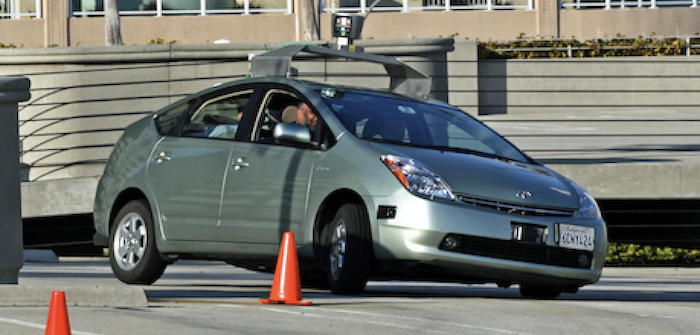Simone Formentin, PhD, assistant professor at the department of electronics, information and bioengineering at Politecnico di Milano, Italy, discusses control factors for autonomous vehicles.
The idea of autonomous cars has been around since the 1920s, but the first prototypes of truly autonomous (albeit limited in performance) road vehicles appeared only in the 1980s.
Since then, several companies, such as Mercedes, Nissan and Tesla, as well as many universities and research centers all over the world, have pursued the dream of self-driving cars.
More recently, a few ad hoc competitions and the increasing interest of some big tech companies have rapidly accelerated research in this area and helped the development of advanced sensors and algorithms. As an example, consider that Google maintains (and publishes) monthly reports including the experimental tests and the most recent advances on its driverless car project.
The reasons why such technology is not yet on the market are many and varied. From a scientific point of view, autonomous road vehicles pose two major challenges:
• A communication challenge – how to interact with the surrounding environment, taking all safety, technological and legal constraints into account
• A vehicle dynamics challenge – the car must be able to follow a prescribed trajectory in any road conditions
On the one hand, the interaction with the environment mainly concerns sensing and self-adaptating to time-varying conditions and information exchange with other vehicles to optimize some utility functions (the so-called ‘internet of vehicles’ (IoV)). These issues undoubtedly represent novel problems for the scientific community and have been extensively researched over the past few years.
On the other hand, control of vehicle dynamics may seem a less innovative challenge, since electronic devices such as ESP and ABS are already ubiquitous in cars. Within this framework, robust control – namely the science of designing feedback controllers by taking a measure of uncertainty into account – has played a central role. However, by taking a deeper look at the problem, it becomes evident that the main vehicle dynamics issues for autonomous cars are more complex than those concerning human-driven cars and the standard approaches may no longer be effective.
Path planning and tracking is a widely studied topic in robotics, aerospace and other mechatronics applications, but it is certainly novel for road vehicles. In fact, in existing cars, even the most cutting-edge technology devices are dedicated to adjusting vehicle speed or acceleration in order to increase safety and performance, whereas the trajectory tracking task is always left fully to the driver (except for few examples, like automatic parking systems).
Nonetheless, most vehicle dynamics problems arise from the fact that the highly non-linear road- tire characteristics are unknown and unmeasurable with the existing (cost-affordable) sensors. Therefore, keeping the driver inside an outer control loop (path tracking) represents a great advantage in that she/he can manually handle the vehicle in critical conditions (at least to a certain extent) and make the overall system robust to road and tire changes. This is obviously not the case with autonomous vehicles.
Hence, it seems that standard robust control for braking, traction or steering dynamics could turn out not to be robust enough for path tracking in autonomous vehicles, because one can no longer rely upon the intrinsic level of robustness provided by the driver feedback loop. In city and highway driving, this fact may not represent a problem, because the sideslip angles characterizing the majority of maneuvers are low and easily controllable. However, in the remaining cases (e.g. during sudden maneuvers for obstacle avoidance), a good robust controller for path tracking, exploiting the most recent developments in the field, could really be decisive in savinghuman lives in road accidents.
It can be concluded that a few important questions still need to be answered by robust control experts, including:
• Can we provide a sufficient level of robustness with respect to all road and tire conditions, without decreasing performance to much?
• Are we able to replicate the response of an expert driver to a sudden change of external conditions?
• How can we best exploit the information coming from the additional sensors usually not available on-board (e.g. cameras, sonars, etc)? There are also many other questions.
IEEE experts estimate that up to 75% of all vehicles will be autonomous by 2040. This scenario will be accompanied by significant cost savings associated with human lives, time and energy. As control scientists and engineers, it really seems we can play a leading role in working towards this important social and economic leap.
Simone Formentin, PhD, is an assistant professor at the department of electronics, information and bioengineering at Politecnico di Milano, Italy





